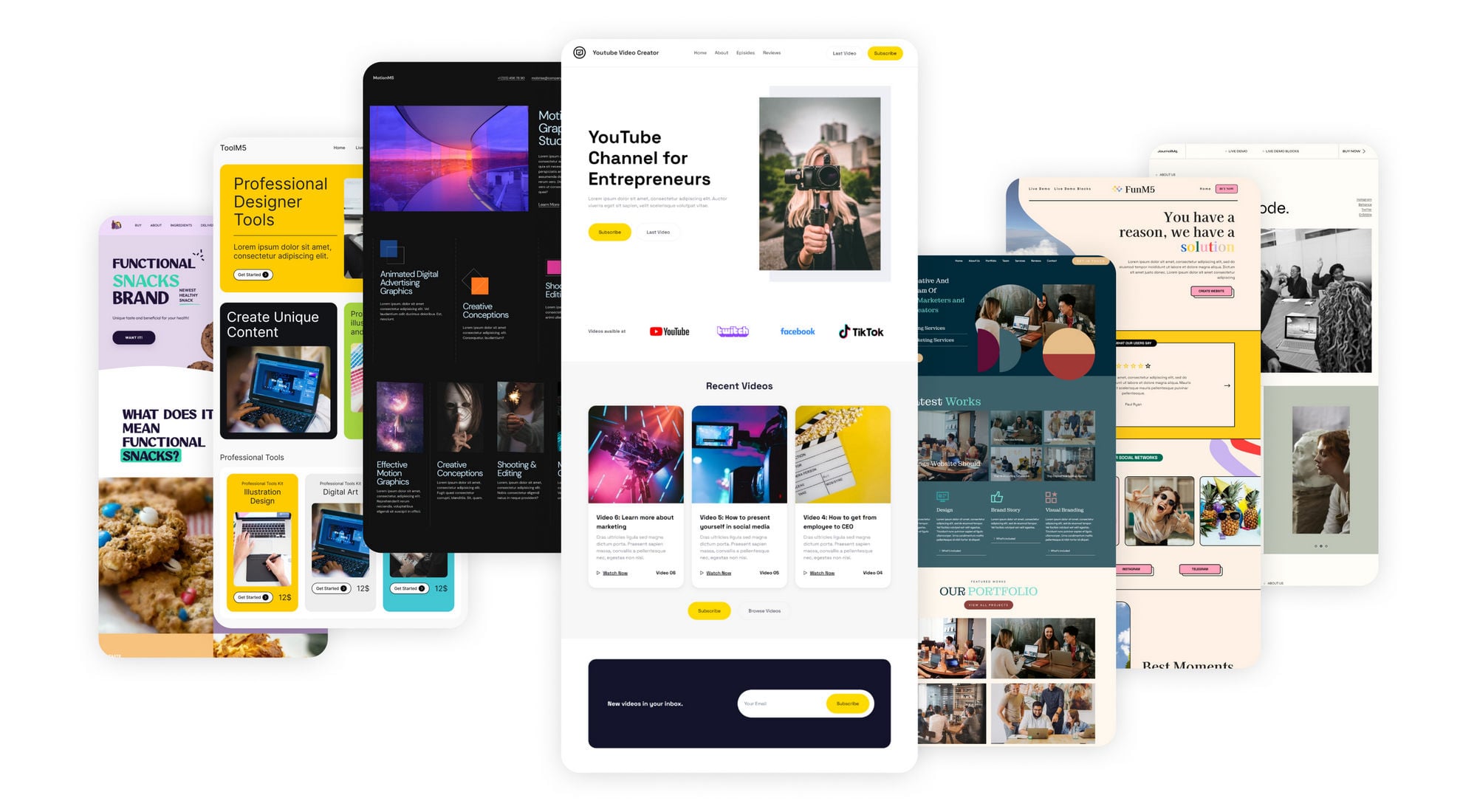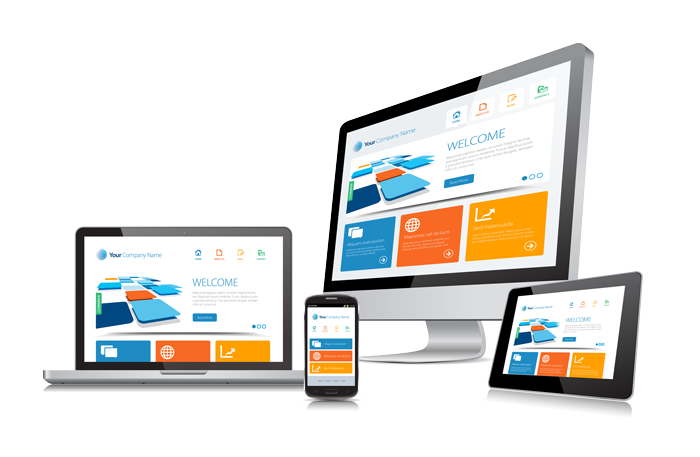The Future of Digital Marketing: Embracing Modern Website Design Trends
The Future of Digital Marketing: Embracing Modern Website Design Trends
Blog Article
Key Methods for Applying User-Centric Web Site Layout to Increase Interaction
When taking into consideration the execution of user-centric web site style, certain strategies are crucial in enhancing involvement. Complete study right into individual needs and choices develops the foundation, leading the production of customer identities to inform layout options. Individualizing material enhances individual contentment, and durable availability functions broaden reach.
Recognizing Individual Needs
Understanding customer needs is a basic action in the procedure of user-centric website style. This technique guarantees that the internet site lines up with the assumptions and demands of its target market, eventually bring about improved customer fulfillment and engagement. The preliminary stage involves carrying out extensive study to gather understandings right into individual actions, preferences, and discomfort factors. Strategies such as surveys, meetings, and customer testing can provide important qualitative and measurable data regarding exactly how customers communicate with the web site.
Assessing this information enables designers to produce detailed customer personas that represent the various sections of the target market. These personas assist inform design choices by highlighting specific individual objectives and difficulties, assisting the development of attributes that address these needs effectively. Understanding the context in which customers run-- such as their setting, gadget preferences, and time constraints-- can further refine the layout strategy.
Compassion plays a vital function in this procedure, enabling developers to see the internet site from the user's point of view. By focusing on user needs, the layout procedure ends up being more concentrated, protecting against the addition of unnecessary components that might clutter the customer experience. Eventually, a deep understanding of user demands is crucial in crafting a web site that is both functional and purposeful.
Creating Intuitive Navigation
Having actually established a thorough understanding of individual needs, the following action in user-centric web site layout includes developing user-friendly navigating. Effective navigating is fundamental to customer fulfillment, influencing just how quickly customers can locate info and complete jobs. To accomplish intuitive navigating, designers have to prioritize simpleness and clarity, making certain that the navigation framework is sensible and consistent throughout the site.
Organizing content right into a clear hierarchy is important. Website Design. Making use of familiar labels and symbols can guide individuals easily, reducing cognitive lots and boosting the overall customer experience. A properly designed navigation bar must be prominently positioned, enabling users to identify their current place and quickly discover various other areas of the internet site
It is also essential to integrate interactive aspects such as breadcrumbs and search capabilities to aid customers in browsing complex sites. These features provide additional pathways and improve the ease of access of material, satisfying various user preferences and actions.
Checking navigating with genuine individuals is necessary to determine prospective pain factors and make certain capability straightens with individual expectations. Normal comments loopholes and repetitive enhancements can help keep an efficient navigation system that adjusts to developing user demands, eventually boosting involvement and satisfaction.
Developing Responsive User Interfaces
Invariably, producing receptive interfaces is a pivotal facet of modern-day website design, making sure that websites are obtainable and practical across a wide variety of devices and display sizes (Website Design). This flexibility is important in a landscape where users gain access to content by means of mobile phones, desktop computers, laptop computers, and tablet computers, each with varying resolutions and orientations. The main goal of receptive design is to improve customer experience by maintaining optimal readability and functionality, no matter the device utilized
To accomplish this, internet designers utilize versatile grid formats, link liquid images, and CSS media queries. Versatile grids enable website elements to resize proportionally, while fluid pictures make certain visuals range suitably without shedding quality. Media queries play an essential duty by using various designs based upon the tool's qualities, such as size, alignment, and elevation, hence customizing the design to the customer's display.
Moreover, receptive user interfaces add to boosted seo (SEARCH ENGINE OPTIMIZATION) by supplying a smooth individual experience, which consequently can decrease bounce rates and increase site interaction. In summary, adopting receptive layout is not simply a technical factor to consider yet an important strategy for promoting a user-centric internet setting that satisfies the needs of a diverse target market.

Personalizing Content Experience
Personalizing material experience is a critical component of user-centric website style that entails tailoring material to satisfy the one-of-a-kind choices and actions of specific customers. This technique not only enhances customer complete satisfaction however also fosters much deeper interaction, as visitors are more probable to connect with material that resonates with their interests and demands. By leveraging data analytics and customer responses, companies can identify patterns and fads that notify the personalization of web material.
Integrating personalization approaches can vary from basic adjustments, such as recommending products based upon searching background, to extra sophisticated methods like vibrant material that adapts in real-time to an individual's interactions. For example, customized touchdown pages can considerably raise conversion rates by giving individuals with pertinent info and offers that straighten with their previous activities and choices.
Moreover, using expert system and artificial intelligence can additionally improve content personalization by continually finding out from user habits and adjusting to arising trends. This not only enhances the individual's trip yet also builds brand name commitment, as customers feel comprehended and valued. Inevitably, personalizing the material experience is a crucial strategy for companies aiming to produce a much more interesting and purposeful interaction with their audience.
Enhancing Availability Attributes
Enhancing access attributes is a basic aspect of user-centric site style, guaranteeing that news digital material is useful by everybody, including individuals with specials needs. This method not just adheres to legal standards such as the Americans with Disabilities Act (ADA) and the Web Material Availability Guidelines (WCAG) but also substantially expands a web site's audience reach. By integrating features like key-board navigating, display reader compatibility, and alternative text for images, sites end up being much more comprehensive, providing a seamless experience for customers with visual, auditory, or motor disabilities.
Including receptive design elements is crucial, promoting accessibility on different devices and display sizes, therefore fitting users with various preferences and demands. Furthermore, contrast proportions and text dimension modifications can enhance readability for people with aesthetic difficulties. Providing succinct and clear material structure, such get redirected here as lists and headings, help comprehension and navigating, particularly for individuals with cognitive specials needs.
Routine access audits ought to be performed to identify and remedy potential barriers, making sure continued compliance and functionality. By focusing on ease of access, organizations not only foster inclusivity however additionally enhance general individual interaction and satisfaction, ultimately driving greater conversion prices and strengthening brand commitment.

Verdict
Integrating user-centric layout methods considerably boosts site involvement by prioritizing the requirements and choices of individuals. Comprehensive research study facilitates the production of individual personas, assisting targeted design choices. Intuitive navigation and receptive user interfaces enhance use and ease of access throughout devices. Customizing material based upon individual habits raises contentment, while robust ease of access functions increase target market reach. Jointly, these strategies produce a significant on the internet experience, cultivating much deeper engagement and interaction with the site.
Comprehensive research into customer requirements and preferences develops the foundation, guiding the creation of customer characters to educate layout choices. Strategies such as studies, interviews, and user testing can offer important qualitative and quantitative data concerning exactly how individuals communicate with the site.
By prioritizing customer requirements, the style process ends up being more concentrated, stopping the incorporation of unnecessary components that could clutter the user experience. Efficient navigating is fundamental to user complete satisfaction, affecting exactly how quickly customers can discover information and full tasks. The usage of acquainted labels and symbols can guide customers effortlessly, minimizing cognitive load and boosting the general individual experience.
Report this page